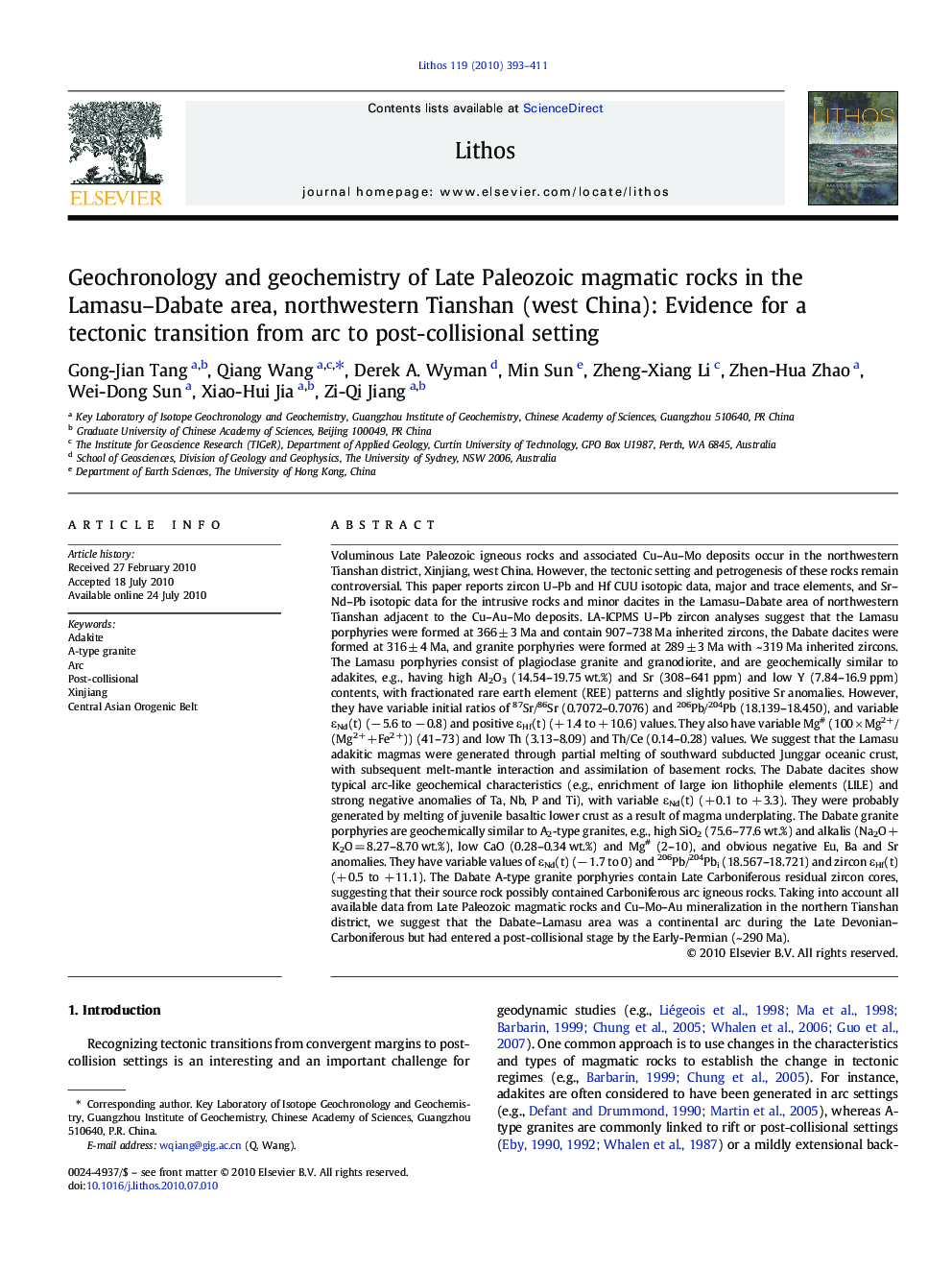| کد مقاله | کد نشریه | سال انتشار | مقاله انگلیسی | نسخه تمام متن |
|---|---|---|---|---|
| 4716882 | 1638728 | 2010 | 19 صفحه PDF | دانلود رایگان |

Voluminous Late Paleozoic igneous rocks and associated Cu–Au–Mo deposits occur in the northwestern Tianshan district, Xinjiang, west China. However, the tectonic setting and petrogenesis of these rocks remain controversial. This paper reports zircon U–Pb and Hf CUU isotopic data, major and trace elements, and Sr–Nd–Pb isotopic data for the intrusive rocks and minor dacites in the Lamasu–Dabate area of northwestern Tianshan adjacent to the Cu–Au–Mo deposits. LA-ICPMS U–Pb zircon analyses suggest that the Lamasu porphyries were formed at 366 ± 3 Ma and contain 907–738 Ma inherited zircons, the Dabate dacites were formed at 316 ± 4 Ma, and granite porphyries were formed at 289 ± 3 Ma with ~ 319 Ma inherited zircons. The Lamasu porphyries consist of plagioclase granite and granodiorite, and are geochemically similar to adakites, e.g., having high Al2O3 (14.54–19.75 wt.%) and Sr (308–641 ppm) and low Y (7.84–16.9 ppm) contents, with fractionated rare earth element (REE) patterns and slightly positive Sr anomalies. However, they have variable initial ratios of 87Sr/86Sr (0.7072–0.7076) and 206Pb/204Pb (18.139–18.450), and variable εNd(t) (− 5.6 to − 0.8) and positive εHf(t) (+ 1.4 to + 10.6) values. They also have variable Mg# (100 × Mg2+/(Mg2++ Fe2+)) (41–73) and low Th (3.13–8.09) and Th/Ce (0.14–0.28) values. We suggest that the Lamasu adakitic magmas were generated through partial melting of southward subducted Junggar oceanic crust, with subsequent melt-mantle interaction and assimilation of basement rocks. The Dabate dacites show typical arc-like geochemical characteristics (e.g., enrichment of large ion lithophile elements (LILE) and strong negative anomalies of Ta, Nb, P and Ti), with variable εNd(t) (+ 0.1 to + 3.3). They were probably generated by melting of juvenile basaltic lower crust as a result of magma underplating. The Dabate granite porphyries are geochemically similar to A2-type granites, e.g., high SiO2 (75.6–77.6 wt.%) and alkalis (Na2O + K2O = 8.27–8.70 wt.%), low CaO (0.28–0.34 wt.%) and Mg# (2–10), and obvious negative Eu, Ba and Sr anomalies. They have variable values of εNd(t) (− 1.7 to 0) and 206Pb/204Pbi (18.567–18.721) and zircon εHf(t) (+ 0.5 to + 11.1). The Dabate A-type granite porphyries contain Late Carboniferous residual zircon cores, suggesting that their source rock possibly contained Carboniferous arc igneous rocks. Taking into account all available data from Late Paleozoic magmatic rocks and Cu–Mo–Au mineralization in the northern Tianshan district, we suggest that the Dabate–Lamasu area was a continental arc during the Late Devonian–Carboniferous but had entered a post-collisional stage by the Early-Permian (~ 290 Ma).
Journal: Lithos - Volume 119, Issues 3–4, October 2010, Pages 393–411